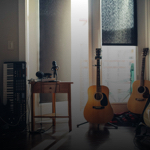Section 1
Preview this deck
first category of music
Front
Active users
0
All-time users
0
Favorites
0
Last updated
5 years ago
Date created
Mar 14, 2020
Cards (74)
Section 1
(50 cards)
first category of music
popular music is professionally composed, recorded, or performed live and represents the type of music of most current interest to the public
piccolo
is smaller version of the flute played in the same manner much higher pitch
music objectives
artistic perception creative expression aesthetic valuing historical and cultural context connections, relationships, applications
form
refers to the overall structure of music
tuba
lowest pitch of all brass played like the trumpet with the bell facing upward
bassoon
large double-reed instrument that plays lower notes than the oboe
timbre
describes the unique sound produced by different instruments, instrumental combinations and by the human voice families such as wood winds and horns have similar of this
viola
a little larger than the violin deeper pitch than the violin
time signature
written at the beginning of each staff the top number shows how many beats per measure and the bottom number shows which note gets a beat
cymbals
are hit together and produce a crashing sound
staccato
choppy aspect of texture
third category of music
folk music usually has a rural origin, is usually not composed professionally, and is often transmitted by oral tradition
clef
placed at the beginning of the staff determines the pitches for each line and space on the staff most common are G (treble), and F (bass)
tempo
speed of the music may vary in different sections to provide contrast
flute
played by blowing across an opening, covering holes with fingers
orchestra instruments
usually classified as strings, woodwinds, brass, and precussion
the natural
cancels a flat or a sharp
harmony
chords with a duration a melody is the tones that produce the distinctive sound of the music played with the left hand on the piano
chromatic scale
includes the seven notes of the diatonic scale with the five sharps and flats corresponding to the white and black keys on the piano
second category of music
classical music was composed in the past and, while it is also recorded for sale, is usually performed by large orchestras in symphony halls
woodwinds
played by blowing most have reeds while a few don't
clarinet
a single-reed instrument with a wide range of notes
sharp
raises the note a half tone
strings
are played by plucking or drawing a bow notes are formed by holding the strings down while plucking or bowing violins, violas, cellos, and bass guitar not usually found in an orchestra
g clef
notes on the lines are E G B D F notes on the spaces are F A C E
first violin
usually the concert master or mistress, the first assistant to the conductor
french horn
played like the trumpet, but the opening bell faces backwards musician often puts hand in the bell
trombone
played by moving a slide and gives it the widest range if notes in the brass section
staff
our musical notation uses this to represent notes partitioned into measures
oboe
a double-reed instrument that looks like a clarinet and is played in the same manner
brass
played by vibrating the lips against the mouthpiece french horns, trumpets, trombones, and tubas
timpani
or kettle drums, have a deeper sound than the snare drums
texture
refers to the feel the music imparts
cello
rests on the floor in front of the musician
flat
lowers the note a half tone
melody
usually consists of one note at a time and is played with the right hand on the piano
pitches
separated by specific intervals are called a scale
key signature
of sharps and/or flats can be written at the beginning of the staff to change these notes throughout the piece it identifies the key the music is written on
trumpet
creates notes by blowing and pressing a combination of the three valves found on the instrument
bass drum
the largest drum is used to mark the beat in music
music
consists of pitch, the actual frequency or sound of a note, and duration
violin
smallest string instrument in the orchestra more in the orchestra than any other instrument
precussion
instruments played by striking cymbals, snare drum, timpani, and base drum also piano and xylophone and are found in this section of the orchestra
rhythm
refers primarily to the regularity of beats or meter most common meter has four beats with an emphasis on the first
dynamics
describes how loud or soft the music is add to music expressive qualities
pianissimo
play very softly aspect of dynamics
double bass
the largest string instrument twice as large as the cello
diatonic scale
most music based on this found on the piano in white keys C D E F G A B
snare drum
is a small drum struck repeatedly to create accents in music
chords
a tone has a specific pitch and duration different tones occurring simultaneously
Section 2
(24 cards)


